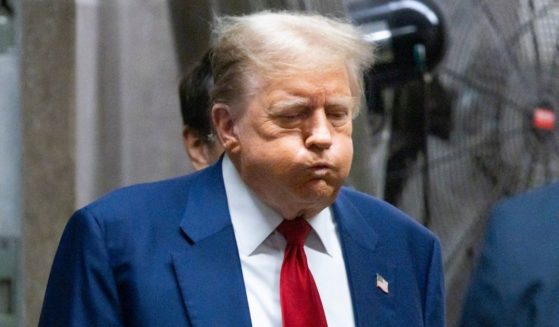US Trade Deficit Hits All-Time Record
The United States trade deficit has increased by a record amount, as data released by the Department of Commerce on Thursday showed.
This means Americans are buying more goods than they export from overseas, representing an outflow of money.
According to a news release from the Commerce Department’s Census Bureau and Bureau of Economic Analysis, the seasonally adjusted U.S. goods and services deficit was $75.7 billion in June, a 6.7 percent, or $4.8 billion, increase from the $71.0 billion deficit in May.
In 2021, to date, the goods and services deficit has increased 46.4 percent from numbers in January 2020 to June 2020, with imports increasing by $286.7 billion or 21.3 percent, and exports by $150.9 billion or 14.3 percent from 2020 figures.
Pre-pandemic, the monthly trade deficit would be somewhere between $40 billion and $50 billion, as reported by The Wall Street Journal.
The Commerce Department said that in June, the nation imported $283.4 billion worth of goods and services, a $6.0 billion increase from May figures. It exported $207.7 billion worth of goods and services, a $1.2 billion increase from numbers in May.
Imports of consumer goods dropped slightly in June. These include finished goods consumers buy for home, educational, personal or recreational use, ranging from foodstuffs, furs and jewelry to bicycles, refrigerators and electronics.
The U.S. imported $380.8 billion worth of them between January and June of 2021, according to a spreadsheet shared by the Commerce Department, with $62.39 billion worth of them imported in June alone.
Capital goods include assets entrepreneurs and corporations buy to produce goods for consumers. Examples of these kinds of goods include factory robots, construction equipment and industrial tools.
The U.S. brought in $372.71 billion worth of them between January and June, with $63.41 billion worth of capital goods imported in June.
The principal drivers of the June deficit increase have been industrial supplies, iron and steel-mill products, organic chemicals and gold. Many of these products go into manufacturing finished goods for American households and overseas buyers.
Much of U.S. imports from countries such as Canada, Brazil, India and South Korea have come from China until now, a Commerce Department spreadsheet shows.
During the year of 2021, to date, the U.S. has imported a whopping $258.88 billion worth of goods and services from China and exported only $76.1 billion worth of goods and services to China.
In recent months, as reported by the Wall Street Journal, American consumers and businesses have increased their spending and investments as the economy reverts to its size pre-pandemic. This has given rise to a demand for goods that cannot be satiated by local manufacturers alone.
The stimulus payments the government sent out to Americans since the early months of the pandemic have played a significant role in this. The payments have given American households more money to spend. With more disposable income, they seek to purchase more goods than what local producers can offer.
Chief Financial Officer Katsuyuki Mizuma of Japanese carmaker Subaru told Wall Street Journal that “U.S. dealers were desperately trying to order more imported vehicles to relieve a shortage of inventory,” according to the outlet.
“As soon as the ship reaches the shore, they sell right away.”
That said, with a strong U.S. demand, overseas producers of the goods and services Americans buy have been experiencing their own issues with factory closures and supply-chain shortages, the Wall Street Journal reported.
As for exports, part of the reason why their growth has been slow is the slow recovery from the pandemic other parts of the world have been experiencing. This prevents consumers in other parts of the world from buying as many U.S. goods and services as they used to purchase pre-pandemic.
Last month, the International Monetary Fund increased its 2022 economic growth forecast for advanced economies, including the U.S., by 0.5 percentage points.
The change in the forecast takes into account the financial support the governments in these economies have been providing to their jurisdictions and the improvement in health numbers across these economies.
As for emerging markets and developing countries, the IMF has decreased its growth forecast for those economies, expecting rising inflation in some of them due to high food prices and taking into account slower vaccination rates and poorer healthcare situations in those regions.
Vaccine access is the primary fault line dividing the global economic recovery in two blocs: those with access to vaccines and those without. https://t.co/yxs2PsGbgB #WEO pic.twitter.com/0x8RacYAZv
— IMF (@IMFNews) August 5, 2021
While the delta variant has brought hardships to the U.S., it is expected to wreak more havoc on countries that struggle with vaccinating their population, the Wall Street Journal reported.
The rise in U.S. exports is contingent on the increase in demand for U.S. goods overseas. And the increase in demand for U.S. goods abroad is dependent on improvements in the economic situation overseas.
Unless people have sufficient disposable incomes, there won’t be a demand that exceeds what local producers there can meet, requiring the U.S. to fill in the gap with its exports.
“Multilateral action has a vital role to play in diminishing divergences and strengthening global prospects. The immediate priority is to deploy vaccines equitably worldwide,” the IMF said.
Truth and Accuracy
We are committed to truth and accuracy in all of our journalism. Read our editorial standards.












